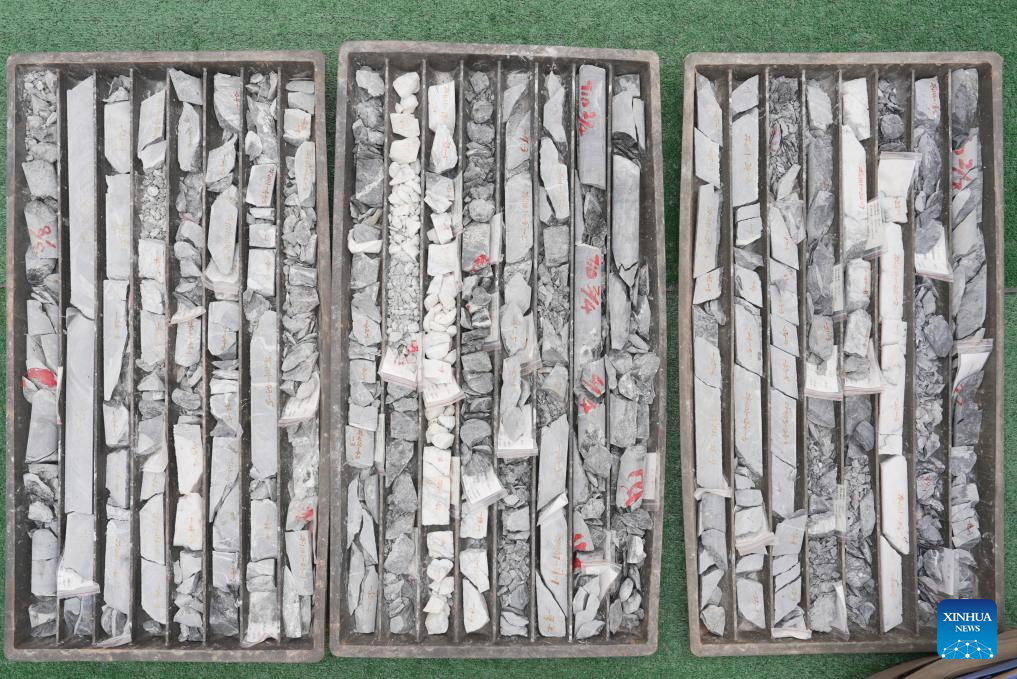A massive gold deposit buried deep in China’s Hunan province is reshaping the future of global mining. Tucked beneath the Wangu gold field in Pingjiang County, the site may hold as much as 1,100 tons of gold ore.
If confirmed, this would surpass all known precious metal reserves on Earth. That includes the famed South Deep mine in South Africa, which holds around 1,025 tons. The find could shift the global center of gold production.
Initial exploration work uncovered more than 40 gold-bearing veins across the site. These veins lie at extreme depths—many more than 6,600 feet below the surface. Early estimates placed the deposit at 330 tons. But new 3D geological models soon revealed something even more extraordinary.

Data now suggest the deposit stretches as far down as 10,000 feet. At that depth, geologists from the Hunan Geological Bureau project a possible reserve nearing 1,100 tons. The site’s value could reach $83 billion, or roughly 600 billion yuan, making it a cornerstone of China’s resource wealth.
The quality of the ore adds even more weight to the discovery. Some samples have shown as much as 138 grams of gold per metric ton—a far richer yield than most gold mines offer. “Many drilled rock cores showed visible gold,” said Chen Rulin, a senior expert with the geological team.
Such richness is rare in modern mining. Most commercial mines operate on far leaner concentrations. The high-grade material found here could drive down extraction costs and accelerate development efforts at the site.
Global markets quickly reacted. Gold prices jumped to $2,700 per ounce after the announcement. That price nears all-time highs. With global tensions rising, investors are again looking to gold as a hedge. This find may only fuel that trend further.
Related Stories
China, already the world’s top gold producer, accounts for 10% of global output, producing 268.068 tons of gold in the first three quarters of 2023. Despite this, the nation consumes far more than it produces—741.732 tons over the same period—necessitating substantial imports. This imbalance has made China the world’s largest importer of gold.
While the new discovery might reduce dependency on foreign sources, it will only cover about 1.4 years of the nation’s current consumption. Nevertheless, it represents a significant step in addressing China’s growing demand for gold.
The discovery in Hunan adds to the global tally of gold extracted throughout history. To date, approximately 234,332 tons of gold have been mined, with two-thirds of this total extracted since 1950. Despite these figures, all the gold ever mined would fit into a single 72-foot cube—just slightly smaller than a blue whale.
Gold reserves worldwide remain unevenly distributed, with South Africa’s South Deep mine historically holding the title for the largest deposit. Other major reserves are found in Indonesia, Russia, Papua New Guinea, and Chile, while the United States contributes significantly with the Carlin Trend and Cortez mines in Nevada.

As massive as the Hunan deposit is, extracting its riches presents challenges. Mining at depths approaching 10,000 feet is both technologically demanding and expensive. Additionally, the inherent volatility of commodity markets makes long-term predictions for gold prices uncertain. Analysts point to factors such as interest rates, inflation, and geopolitical instability as key influencers of gold’s future valuation.
Some experts are optimistic, predicting sustained high prices due to global economic uncertainties. Others caution against overly bullish projections, emphasizing the unpredictable nature of the gold market.
Liu Yongjun, vice head of the Hunan Geological Bureau, hinted that this may only be the beginning. Test drilling around the deposit’s periphery revealed additional gold ore, suggesting that even more reserves could be discovered nearby.

China’s newfound wealth beneath the Wangu gold field is a testament to the country’s geological richness and technological prowess. While it may not entirely offset China’s dependency on imported gold, this discovery marks a major leap forward. Its impact will likely resonate across global markets, influencing everything from gold prices to international trade dynamics.
As China continues to explore the full potential of this deposit, the world watches closely, knowing that this “supergiant” find could redefine the future of gold mining.
Note: Materials provided above by The Brighter Side of News. Content may be edited for style and length.
Like these kind of feel good stories? Get The Brighter Side of News’ newsletter.
The post China discovered the world’s largest gold deposit, alarming markets appeared first on The Brighter Side of News.
Leave a comment
You must be logged in to post a comment.